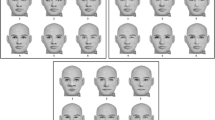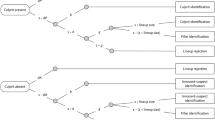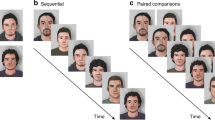Abstract
Previous treatments of eyewitness lineups have focused exclusively on the importance of homogeneity (similarity of common features) in the physical characteristics of lineup members. This has led to some confusion about the proper way to select distracters. We argue that distracters should not be selected for their similarity to the suspect but rather for their similarity to the witness's description of the culprit. The similarity-to-suspect strategy fails to define limits to the number, type, and degree of featureal matching and falls prey to the logical extension that a good lineup is composed of the suspect's clones. Accordingly, the similarity-to-suspect strategy has no supportive logic in recognition memory theory and gives no credit to the importance of hit rates. The similarity-to-witness's-description-of-culprit criterion, on the other hand, specifies a finite and manageable set of feature requirements for distracters, articulates a role for heterogeneous features, meets all functional requirements for fairness to the suspect, has a supportive logic in recognition memory theory, preserves hit rates, and is not subject to the clone argument.
Similar content being viewed by others
References
Deffenbacher, K. A. (1980). Eyewitness accuracy and confidence: Can we infer anything about their relationship?Law and Human Behavior, 4, 243–260.
Doob, A. N., & Kirshenbaum, H. (1973). Bias in police lineups—partial remembering.Journal of Police Science and Administration, 1, 287–293.
Ellison, K. W., & Buckhout, R. (1981).Psychology and criminal justice. New York: Harper and Row.
Gibson, E. J. (1969).Principles of perceptual learning and development. New York: Prentice Hall.
Lindsay, R. C. L., & Wells, G. L. (1980). What price justice? Exploring the relationship between lineup fairness and identification accuracy.Law and Human Behavior, 4, 303–314.
Loftus, E. F., & Greene, E. (1980). Warning: Even memory for faces can be contagious.Law and Human Behavior, 4, 323–334.
Malpass, R. S. (1981). Effective size and defendant bias in eyewitness identification lineups.Law and Human Behavior, 5, 299–309.
Malpass, R. S., & Devine, P. G. (1983). Measuring the fairness of eyewitness identification lineups. In S. Lloyd Bostoch & B. R. Clifford (Eds.),Evaluating witness evidence (pp. 81–102). Chichester: Wiley.
Malpass, R. S., & Devine, P. G. (1984). Research on suggestion in lineups and photospreads. In G. L. Wells & E. F. Loftus (Eds.),Eyewitness testimony: Psychological perspectives (pp. 64–91), New York: Cambridge University Press.
Pigott, M. A., & Brigham, J. C. (1985). Relationship between accuracy of prior description and facial recognition.Journal of Applied Psychology, 70, 547–555.
Shepherd, J. W., Ellis, H. D., & Davies, G. M. (1982).Identification evidence: A psychological evaluation. Aberdeen, Scotland: Aberdeen University Press.
Sobel, N. R., & Pridgen, D. (1981).Eyewitness identification: Legal and practical problems. New York: Clark Boardman.
Wells, G. L. (1985). Verbal description of faces from memory: Are they diagnostic of identification accuracy?Journal of Applied Psychology, 70, 619–626.
Wells, G. L. (1988).Eyewitness identification: A system handbook. Toronto: Carswell Legal Publications.
Wells, G. L., Leippe, M. R., & Ostrom, T. M. (1979). Guidelines for empirically assessing the fairness of a lineup.Law and Human Behavior, 3, 285–293.
Wells, G. L., & Luus, C. A. E. (1990). Police lineups as experiments: Social psychology methods as a framework for properly-conducted lineups.Personality and Social Psychology Bulletin, 6, 106–117.
Wells, G. L., & Luus, C. A. E. (1990). The diagnosticity of a lineup should not be confused with the diagnostic value of non-lineup evidence.Journal of Applied Psychology, 75, 511–516.
Wells, G. L., & Turtle, J. W. (1986). Eyewitness identification: The importance of lineup models.Psychological Bulletin, 99, 320–329.
Wells, G. L., & Turtle, J. W. (1988). What is the best way to encode faces? In M. W. Gruneberg, P. E. Morris, & R. N. Sykes (Eds.),Practical aspects of memory (pp. 163–168), New York: Wiley.
Author information
Authors and Affiliations
Additional information
Preparation of this article was supported in part by a doctoral fellwship from the Social Sciences and Humanities Research Council of Canada to C. A. Elizabeth Luus.
About this article
Cite this article
Luus, C.A.E., Wells, G.L. Eyewitness identification and the selection of distracters for lineups. Law Hum Behav 15, 43–57 (1991). https://doi.org/10.1007/BF01044829
Issue Date:
DOI: https://doi.org/10.1007/BF01044829




